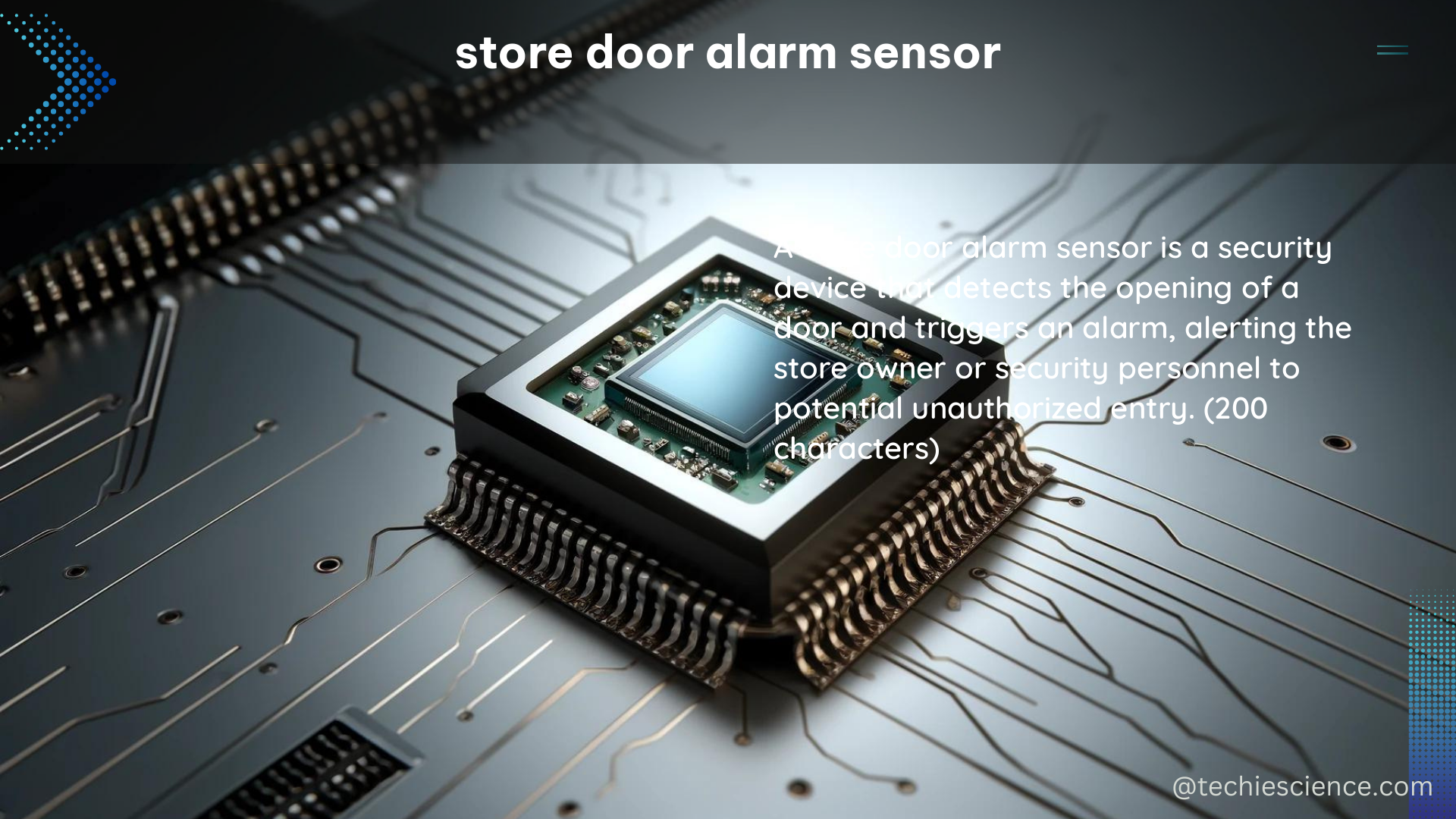The store door alarm sensor is a critical component of any robust physical security system, designed to detect unauthorized entry or exit through a designated door. These sensors operate on one of two fundamental principles: passive infrared (PIR) or magnetic detection. PIR sensors monitor changes in infrared radiation levels, while magnetic sensors detect variations in the magnetic field caused by the opening or closing of a door.
Magnetic Sensor Specifications
For magnetic sensors, a typical measurement is the distance before an alarm is triggered, often set to be before the leading edge of the door has moved 1 inch (2.54 cm). This ensures prompt detection of any unauthorized entry, minimizing the risk of a successful intrusion. Additionally, these sensors should not generate false alarms during slight movements of the latched door, emphasizing the importance of precise calibration and reliable performance.
| Specification | Typical Value |
|---|---|
| Alarm Trigger Distance | Before 1 inch (2.54 cm) of door movement |
| Sensor Type | Magnetic |
| False Alarm Resistance | High, due to precise calibration |
Sensor Maintenance and Verification

Maintaining the optimal operating condition of store door alarm sensors is crucial for their continued effectiveness in detecting unauthorized entry. It is recommended to verify the tamper operation and alarm response when a foreign magnetic field is introduced to the sensor every six months. This proactive approach helps ensure the sensor’s reliability and its ability to reliably detect potential threats.
Maintenance Checklist
- Verify tamper operation and alarm response when a foreign magnetic field is introduced to the sensor.
- Ensure the sensor is properly calibrated and not generating false alarms during slight door movements.
- Check for any physical damage or environmental factors that may affect the sensor’s performance.
- Perform these maintenance tasks every six months to maintain the sensor’s optimal operating condition.
Evaluating Sensor Performance
When evaluating the performance of store door alarm sensors, security professionals must consider several key factors, including:
- Principle of Operation: Understand whether the sensor uses PIR or magnetic detection, as this will impact its sensitivity and response to different types of stimuli.
- Operating Environment: Assess the sensor’s ability to function reliably in the specific environmental conditions of the store, such as temperature, humidity, and potential interference sources.
- Installation and Interconnection: Ensure the sensor is properly installed and integrated with the overall security system, minimizing the risk of installation-related issues.
- Normal Accidental Removal (NAR): Evaluate the sensor’s resistance to false alarms caused by normal, accidental door movements or other non-threatening activities.
- Maintenance: Implement a regular maintenance schedule to keep the sensor in optimal working condition.
- Defined Threat: Assess the sensor’s ability to detect the specific threats it is designed to address, such as unauthorized entry or exit.
By considering these factors, security professionals can ensure that store door alarm sensors are properly calibrated, functioning as intended, and providing reliable protection for the assets they are designed to secure.
Advanced Sensor Features
In addition to the basic functionality, modern store door alarm sensors may incorporate advanced features to enhance their performance and versatility:
- Dual-Technology Sensors: Combining PIR and magnetic detection, these sensors can provide more robust and reliable intrusion detection, reducing the risk of false alarms.
- Wireless Connectivity: Wireless sensors can simplify installation and integration with the overall security system, allowing for greater flexibility in sensor placement and system configuration.
- Tamper Detection: Sensors with built-in tamper detection can alert the security system if the sensor is physically tampered with, providing an additional layer of security.
- Adjustable Sensitivity: Some sensors allow for fine-tuning of the sensitivity settings, enabling optimization for specific environmental conditions or security requirements.
- Remote Monitoring and Configuration: Sensors with network connectivity can be monitored and configured remotely, facilitating efficient maintenance and system management.
Conclusion
The store door alarm sensor is a critical component of any comprehensive physical security system, providing reliable detection of unauthorized entry or exit. By understanding the sensor’s operating principles, maintenance requirements, and performance evaluation factors, security professionals can ensure that these sensors are properly installed, calibrated, and maintained to deliver optimal protection for the assets they are designed to secure.
References
- Sensor Fusion for Intelligent Intrusion Detection in Smart Homes
- Physical Security Assessment of Nuclear Facilities
- Effective Physical Security by Fennelly, L.J.

The lambdageeks.com Core SME Team is a group of experienced subject matter experts from diverse scientific and technical fields including Physics, Chemistry, Technology,Electronics & Electrical Engineering, Automotive, Mechanical Engineering. Our team collaborates to create high-quality, well-researched articles on a wide range of science and technology topics for the lambdageeks.com website.
All Our Senior SME are having more than 7 Years of experience in the respective fields . They are either Working Industry Professionals or assocaited With different Universities. Refer Our Authors Page to get to know About our Core SMEs.